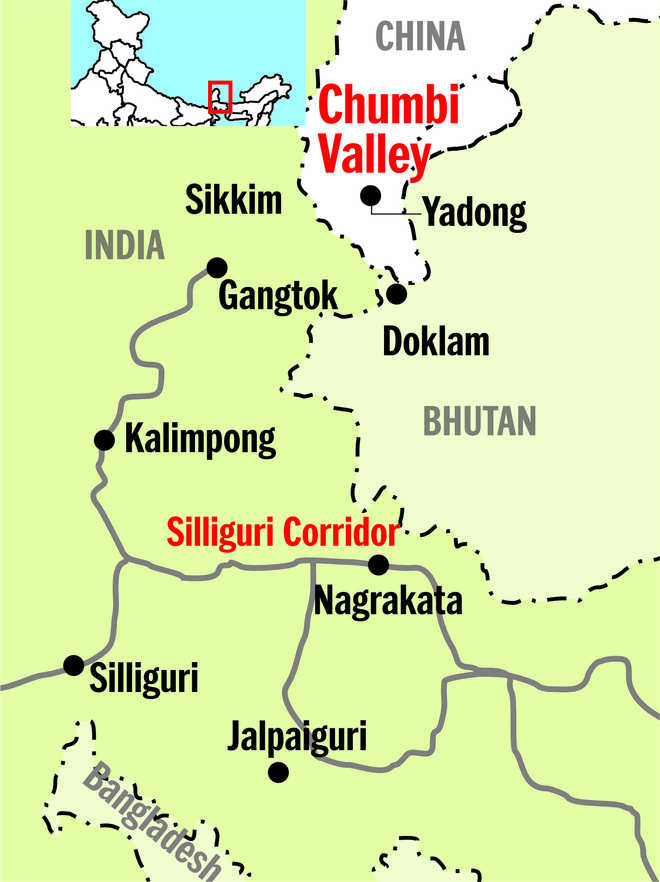Ajay Banerjee
Tribune News Service
New Delhi, June 30
Chumbi valley, the strategic foothold in the Himalayas and the site of recent standoff between India and China, is a narrow sliver of land wedged between Sikkim and Bhutan. It was given to Tibet by the British in 1908 in lieu of an indemnity of Rs 2.5 million ( Rs 25 lakh).
India and China share an un-demarcated boundary along the Himalayan ridge line running along the east-west axis.
The British terms for handing over the Chumbi valley to Tibet (latter annexed by China in 1950) were more in line with their “forward policy” of those times and also in view of the key Tibet-Darjeeling trade route that had opened up after years of efforts.
British Army officer Sir Francis Younghusband, under the guidance of his mentor Lord Nathaniel Curzon, Viceroy of India (1899-1905), invaded Tibet in 1904 and signed a treaty with Lhasa in September that year. London did not agree with Curzon-Younghusband annexation of Tibet and whittled down the treaty to adjust their strategic interests of that time.
In April 1906, the British signed a pact with China at Peking to not engage in Tibet. China went on to be ally of the British in the World War I (1914-1918) and later World War II (1939-1945). Patrick French, author of book “The last of the great imperial adventurer: Younghusband”, writes: “The article which allowed British access to Lhasa was torn up and Younghusband’s hard-earned indemnity reduced to two-thirds of a more manageable Rs 2.5 million ( Rs 25 lakh). The Chumbi valley was to be vacated by 1908.” Younghusband inked an agreement with Tibet for 75 years.
Through the Chumbi valley—25 km at its widest and 2 km at its narrowest—ran the British-Tibet trade route that allowed British to have its agents at Yatung. Trade continued through the Chumbi valley on the Tibet-Darjeeling route even as Tibet controlled the valley.
The region east of Sikkim holds immense strategic importance and provides a commanding view of the Chumbi valley and overlooks the narrow Siliguri Corridor (180km by 75 km), also called the eastern chicken’s neck, which has several vital installations around it and links mainland India with its N-E states.
The Chinese are trying to gain control of the entire Donglang region in the valley which is disputed between Bhutan and China. If they succeed, they can cut off India’s access to the North-East in case of a conflict. In 1996, Beijing indicated that it was ready to swap its territorial claims in northern Bhutan in lieu of Donglang, which is called Doka La by India and Doklam by Bhutan.
Unlock Exclusive Insights with The Tribune Premium
Take your experience further with Premium access.
Thought-provoking Opinions, Expert Analysis, In-depth Insights and other Member Only Benefits
Already a Member? Sign In Now










